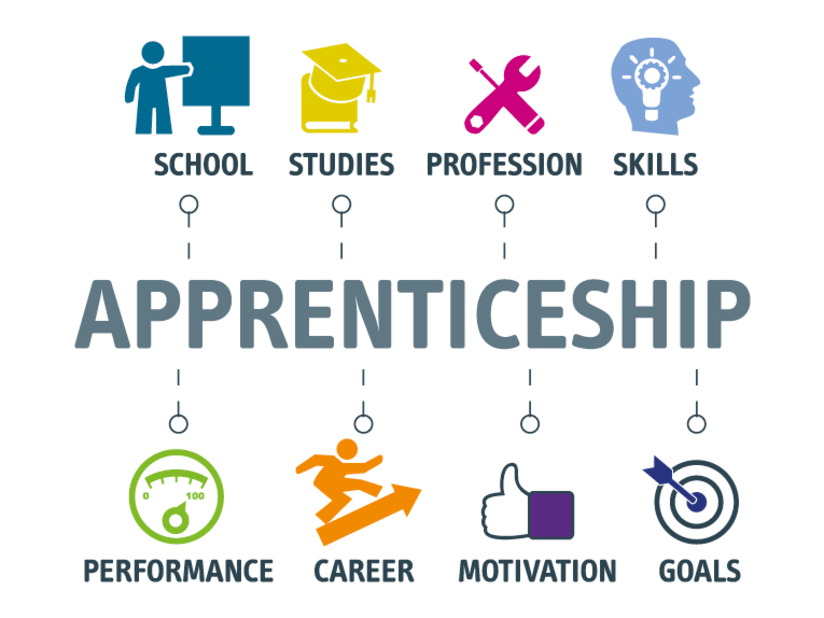
Hiring an Apprentice
Role
Use the gov.uk tool to find the type of apprentice you’re after. For example, if you run a barber shop or hair salon, you can search “hairdresser” and choose between a Level 2/3 Hairdresser (a 12 month placement) or a Hair Professional (24 months).
Find a training provider
N.B. Remember to click ‘No’ when you’re asked if you pay the Apprenticeship Levy. You probably don’t – unless your pay bill is over £3 million!
Contact your provider
Become an Apprentice
Some Apprentice Training not only give you Level 3 qualification, you also gained Industry leading Certifications from CompTIA, Microsoft.
Email you CV to info@techgeekuk.com to know more…

WHAT IS AN APPRENTICESHIP?
It’s a real job, with hands-on experience, a salary and the chance to train while you work. You’re treated just like all the other employees, with a contract of employment and holiday leave.
If you’re 16 or over, you can become an apprentice as long as you spend at least 50% of your working hours in England – for the duration of the apprenticeship and you are not in full-time education.
If you live in Scotland, Wales, or Northern Ireland, check out your apprenticeship options.
When you’re an apprentice:
- you get paid and train at the same time, with at least 20% of your time spent in off the job training, often at a college, university or with a training provider
- You train to be fully competent in Your chosen occupation
- You’re on a career path – with lots of future potential for you

The benefits of employing Young Apprentices
An opportunity to ‘grow your own’
Young apprentices are often new to the workplace, and this gives you a chance to instil your company’s culture from the start. This can help the apprentice to quickly integrate into your way of working and gain the skills and behaviours needed to progress within the company.
Bringing new skills and fresh perspectives to the workplace
Young apprentices may bring with them new skills and experiences which are missing from your workforce. This can enable them to offer fresh perspectives on your business and suggest more
efficient and effective ways of delivering work.
Helping existing staff to develop new skills and experience
Mentoring or line managing a young person can provide opportunities for
your staff to develop new skills and competencies at work3 . While young apprentices can initially be labourintensive, your staff will likely find the process of supporting a young apprentice to ‘come into their own’ rewarding.
Making a difference to young people’s lives Recruiting a young apprentice can help them get on the first step of their career ladder and shape their future for years to come. You can help them gain the skills, experience and behaviours that they need to be a success in their chosen career, while boosting their confidence and independence.

Financial support for recruiting Young Apprentices
£1000 additional funding
All employers can claim £1000 when they employ an apprentice who is:
> aged 16 to 18
> aged 19 to 24 and has previously been in care
> aged 19 to 24 and has an education, health and care plan (EHCP).
No training costs for small employers
If you own a small business (i.e. you have fewer than 50 staff members) then the government will pay 100% of the training costs for an apprentice aged 16 to 18, or an apprentice aged 19 to 24 who is a care leaver or has an EHCP. You can also still claim the additional £1000 for recruiting apprentices with these characteristics.
National Insurance savings
All employers are exempt from paying employer class 1 National Insurance
contributions for apprentices under the age of 25 on earnings below £827
a week (or £43,000 per annum). This means that employers who have an
apprentice aged 21 to 24 paid at the National Minimum Wage would save around £1,500 in National Insurance contributions over the course of a 12-month apprenticeship. If the apprentice is paid the Real Living Wage, this saving increases to over £2,000 per year. You can find the current National Minimum Wage rates at www.gov.uk/national-minimum-wage-rates.
Bursaries for apprentices
In addition to funding for employers, bursaries are available to support
apprentices from disadvantaged backgrounds to meet additional costs
associated with apprenticeships. Employers may wish to point their apprentices towards these funds.
Employer guide to Apprenticeships
Some Apprentice Training not only give you Level 3 qualification, you also gained Industry leading Certifications from CompTIA, Microsoft.
Email you CV to info@techgeekuk.com to know more…


Become an Apprentice
Some Apprentice Training not only give you Level 3 qualification, you also gained Industry leading Certifications from CompTIA, Microsoft.
Email you CV to info@techgeekuk.com to know more…
Contact Us
Disclaimer: This site is only for the purpose of information and its not related to any government grants or any of its affiliation bodies or government apprenticeship program. All the logos, pictures and information were taken from different sources and they belong to their respective owners.